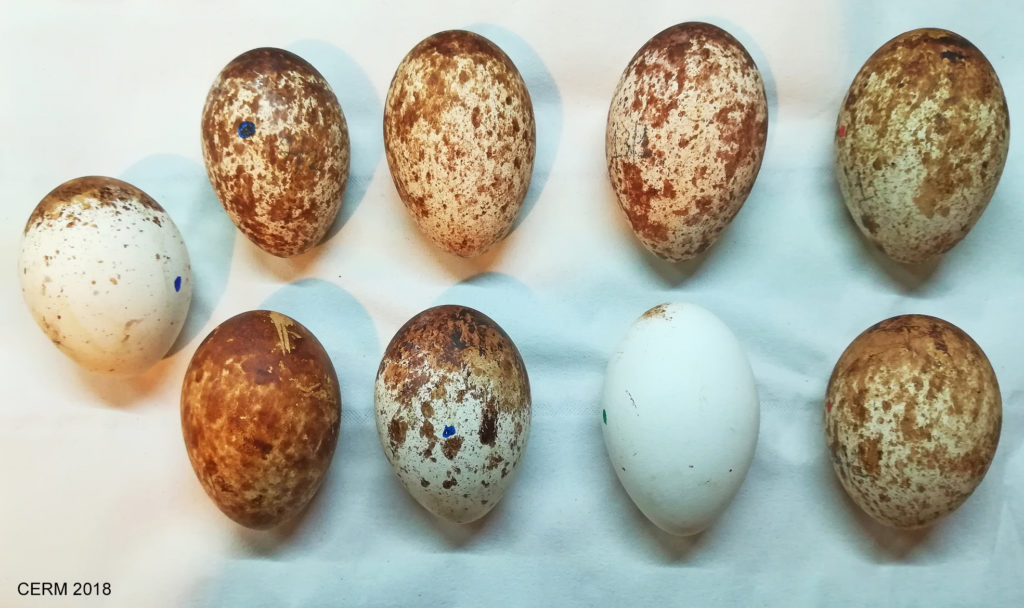Between the 21st of May and the 28th of June, seven chicks were born at the CERM Endangered Raptor Centre, the largest number ever during a breeding series at the centre located in southern Tuscany, which hosts the largest stock of captive Egyptian vultures anywhere in the world.

During the season, a total of 13 eggs were laid, of these eight were fertile and seven produced live chicks, the offspring of four different pairs of birds resident in the Centre’s aviaries. Unfortunately, the eighth chick died immediately after hatching.
However, these numbers do not begin to tell the story of the hard work and dedication necessary to achieve this excellent result: months spent monitoring the breeding pairs on video cameras as well as checking the incubators and incubation parameters, constant surveillance and assistance during hatching and a permanent presence when rearing the chicks and providing them with any treatment they may need.
This demanding work is carried out by Guido Ceccolini, the manager of the CERM Endangered Raptor Centre, and his assistant, Anna Cenerini.
The problems involved in breeding Egyptian vultures are common to all the structures that house pairs of these birds in captivity: partners that do get on with each other, partners that fight in the nest placing the eggs or chicks at risk, males who are aggressive towards their mates, females that attempt to eat their own eggs or chicks. These abnormal forms of behaviour, which are associated with the birds being in captivity, tend to discourage the formation of pairs, meaning that the production of eggs and chicks is a relatively exceptional event.
In order to achieve this result it is necessary to monitor pairs displaying these types of problems on a constant basis, removing the eggs and placing them in artificial incubators as soon as they are laid and replacing them with “dummy” eggs so that the single individuals or pairs continue to brood, as well as employing special techniques to ensure that the chicks are adopted either by biological or adoptive parents.
Moreover, it is necessary to adopt a variety of measures designed to ensure that the chicks receive the correct imprinting on their own species, and not on their human handlers, such as using a puppet with the form of the head and neck of an Egyptian vulture to feed them and camouflage the operators responsible for looking after them.
Every effort is made to ensure the chicks are adopted by reliable pairs or single males before they are five days old, however, if this is not possible, the chicks are placed in incubators and then moved to special cages positioned inside the aviaries so that they can observe individual Egyptian vultures at close quarters.
All these measures are designed to raise young birds that are perfectly adapted to life in the wild, and hence suitable for release.
Of the seven young birds born at CERM in 2018, two are being raised by a pair of Egyptian vultures and three by a couple of single fathers, while the remaining two are housed inside a dedicated aviary that also hosts several adult birds, and where they are looked after by the personnel at the Centre.


